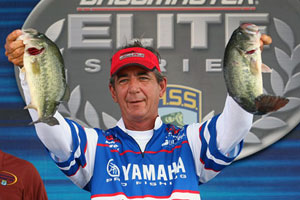

As the fluoro starts to pull the bait down, he’ll abruptly snap the rod tip upward a foot or two. Contrary to the common choice of floating monofilament, fluoro’s sinking properties help guide the lure below the surface, where the act begins.įirst, Monsoor holds his rod at 11 o’clock after the cast and then drops it to 7 o’clock once the bait settles. The key element here is the 12- to 14-pound fluorocarbon spooled on his reel. The goal is to trap an air pocket in the bait’s concave face and produce a serious bubble trail that adds visual appeal to the auditory element.Īrming himself with a 7-foot, medium-action rod, Monsoor opts for a 6.4:1 or 7.1:1 reel, which allows him to quickly gather line and set the hook on a long cast. From the mechanics of the retrieve, to some bait optimizing alterations, a few accomplished pros offered their advice on popping proficiency.įor optimal display, FLW Tour pro Tom Monsoor has developed a technique for forcing his Yamamoto Shibuki popper below the surface.

It may seem a basic task of tug and reel, tug and reel however, consistent success demands more attention to detail. It’s what makes fishing a popper for bass equally effective and fun. Straightforward and simple, yet strongly resonant, the sound of a popper doing its thing is strangely hypnotic above the surface and absolutely enticing below. Complementing these natural sounds, one on the artificial side is as memorable: the “bloop, bloop, bloop” of a popping plug.


 0 kommentar(er)
0 kommentar(er)
